Did you know that frozen asparagus is just as nutritious as fresh asparagus? It’s true! Freezing asparagus is a fantastic way to preserve its freshness and enjoy it later when it may not be in season or readily available.
Asparagus is a versatile and delicious vegetable that can be cooked in various ways and incorporated into a variety of dishes. Whether you’re looking for affordable options, organic choices, or simply the best frozen asparagus, this article will provide you with all the tips and information you need.
Key Takeaways:
- Frozen asparagus is just as nutritious as fresh asparagus.
- Freezing asparagus allows you to enjoy it even when it’s out of season.
- There are different options available, including affordable and organic frozen asparagus.
- Learn how to cook frozen asparagus to perfection with various methods and recipes.
- Discover the benefits and versatility of frozen asparagus.
Roasting Frozen Asparagus: A Delicious Alternative
When it comes to cooking frozen asparagus, roasting is a mouthwatering option that helps retain its flavor and texture. Unlike steaming or microwaving, roasting frozen asparagus prevents it from getting soggy and instead gives it a satisfying crispy finish. The process is simple and results in a delightful side dish that pairs well with various main courses.
To roast frozen asparagus, start by preheating your oven to 425°F (220°C). While the oven is heating up, prepare a sheet pan by lining it with parchment paper for easy cleanup.
Next, spread the frozen asparagus evenly on the prepared sheet pan. Drizzle the asparagus with olive oil, which adds richness and helps with the roasting process. For added flavor, sprinkle salt, pepper, and any other desired seasonings, such as garlic powder or lemon zest. Toss the asparagus gently to ensure that each spear is coated with the oil and seasonings.
Once the oven has reached the desired temperature, place the sheet pan with the seasoned asparagus in the center of the oven. Roast the asparagus for about 12-15 minutes, or until the spears are fork-tender and slightly crispy. The exact roasting time may vary depending on the thickness of the asparagus, so keep an eye on it to prevent overcooking.
When the roasting is complete, remove the sheet pan from the oven and let the asparagus cool for a few minutes before serving. The result is a delectable dish with a delightful crunch and a burst of flavor.
Roasted frozen asparagus is not only delicious but also versatile. It can be enjoyed as a side dish, added to salads, or even incorporated into pasta dishes and stir-fries. The crispy texture of the roasted asparagus adds a delightful contrast to other ingredients, making any meal more enjoyable.
So, the next time you find yourself with a bag of frozen asparagus, consider giving roasting a try. It’s a simple yet flavorful cooking method that elevates the taste of this nutritious vegetable.
Asparagus Nutrition Info
When it comes to nutrition, asparagus truly shines. This vibrant vegetable is not only delicious but also loaded with essential vitamins and minerals. Let’s take a closer look at the impressive nutrient profile of asparagus and its many health benefits.
The Nutrients in Asparagus
Asparagus is packed with a variety of nutrients that contribute to its numerous health benefits. Here are some of the key nutrients found in this green veggie:
- Folate: Asparagus is an excellent source of folate, a B-vitamin that plays a crucial role in DNA synthesis and cell division. Adequate folate intake is especially important for pregnant women as it supports the healthy development of the baby.
- Iron: Iron is a vital mineral that helps transport oxygen throughout the body. Including asparagus in your diet can contribute to maintaining healthy blood cells and preventing iron deficiency anemia.
- Fiber: Asparagus is rich in dietary fiber, which promotes digestion and helps maintain a healthy digestive system. Consuming fiber-rich foods like asparagus may aid in weight management and reduce the risk of chronic diseases like heart disease and type 2 diabetes.
- Potassium: Asparagus contains potassium, an essential mineral that helps regulate blood pressure, maintain fluid balance, and support proper muscle and nerve function.
- Phosphorus: Phosphorus is an essential mineral that contributes to bone health, helps filter waste from the kidneys, and supports energy production in the body.
- Antioxidants: Asparagus is a great source of antioxidants, including vitamins C and E, which help protect cells against damage from harmful free radicals. Antioxidants play a vital role in reducing inflammation and supporting overall health.
Health Benefits of Asparagus
The combination of nutrients found in asparagus offers numerous health benefits:
- Supports Heart Health: Asparagus is low in calories and sodium while being rich in potassium and fiber. This combination promotes a healthy heart by helping to lower blood pressure and maintain healthy cholesterol levels.
- Aids Digestion: The fiber content in asparagus promotes regular bowel movements, preventing constipation and supporting a healthy digestive system.
- Boosts Immunity: The antioxidants and vitamins in asparagus, such as vitamin C, help strengthen the immune system and protect the body against infections and diseases.
- Supports Healthy Pregnancy: Asparagus is an excellent source of folate, making it an essential addition to the diet of pregnant women. Adequate folate intake during pregnancy helps reduce the risk of neural tube defects in babies.
- Promotes Healthy Aging: The antioxidants in asparagus help reduce oxidative stress and cellular damage, which can contribute to aging. Including asparagus in your diet may help slow down the aging process and promote overall well-being.
Incorporating asparagus into your meals not only adds vibrant color and delicious flavor but also provides a wide range of nutrients that support your overall health and well-being.
Now that we’ve explored the nutritional benefits of asparagus, let’s move on to the comparison between frozen and fresh veggies in the next section.
Frozen Veggies vs. Fresh Veggies: Which Are Healthier?
When it comes to choosing between frozen veggies and fresh veggies, many people wonder which option is healthier. While fresh vegetables are often seen as the gold standard, frozen vegetables also offer numerous health benefits. In fact, frozen veggies can be just as nutritious, if not more so, than their fresh counterparts.
Flash Frozen at Peak Freshness
One of the main advantages of frozen vegetables is that they are flash frozen at their peak freshness. This means they are picked and frozen soon after being harvested, allowing them to retain their nutrients. On the other hand, fresh vegetables may spend days or even weeks in transit, losing some of their nutritional value along the way.
Retaining Nutritional Value
Frozen vegetables are often blanched before being frozen, a process that helps preserve their nutritional value. Blanching involves briefly immersing the vegetables in boiling water or steam, which helps to inactivate enzymes that can cause nutrient loss. As a result, frozen vegetables can contain just as many vitamins, minerals, and antioxidants as their fresh counterparts.
Convenience and Shelf Life
Another benefit of frozen vegetables is their convenience and longer shelf life. Fresh vegetables can spoil quickly, especially if not stored properly. On the other hand, frozen vegetables can be kept in the freezer for months without losing their nutritional value. This makes them a convenient option for meal planning, as they can be easily stored and used whenever needed.
Flavorful and Versatile
Contrary to popular belief, frozen vegetables can be just as flavorful as fresh ones when cooked properly. The key is to avoid overcooking them, as this can lead to a mushy texture. By following proper cooking techniques, such as steaming or stir-frying, you can enjoy delicious and nutritious frozen vegetables in your meals.
“Frozen vegetables can be just as nutritious, if not more so, than their fresh counterparts.”
The Verdict:
When it comes to the battle of frozen veggies vs. fresh veggies, both options have their advantages. While fresh vegetables offer the satisfaction of eating produce straight from the farm, frozen vegetables have the benefits of convenience, longer shelf life, and retained nutritional value. Ultimately, the choice between frozen and fresh vegetables depends on personal preference, availability, and individual needs. The most important thing is to incorporate plenty of vegetables into your diet, whether they are fresh or frozen, to reap their health benefits.
Recipe Ideas for Asparagus
When it comes to asparagus, the possibilities are endless. This versatile vegetable can be incorporated into a variety of dishes, adding flavor and nutrition to your meals. Whether you’re looking for a delicious side dish or a main course, here are some recipe ideas that showcase the versatility of asparagus:
- Roasted Asparagus: Oven-roasted asparagus is a simple and delicious way to enjoy this vegetable. Toss the asparagus spears with olive oil, salt, and pepper, then spread them out on a baking sheet. Roast in the oven at 425°F for about 15-20 minutes until tender and slightly crispy.
- Asparagus Frittata: A frittata is a great way to use up leftover asparagus. Sauté the asparagus with onions and garlic, then pour beaten eggs over the vegetables. Cook on the stovetop until the eggs are set, then finish under the broiler for a golden, fluffy frittata.
- Asparagus Pasta: Combine cooked pasta with blanched asparagus spears, sautéed garlic, and a squeeze of lemon juice. Toss everything together with a drizzle of olive oil and grated Parmesan cheese for a quick and satisfying meal.
- Asparagus Salad: Mix blanched asparagus spears with cherry tomatoes, sliced cucumbers, and crumbled feta cheese. Drizzle with a simple vinaigrette made with olive oil, lemon juice, Dijon mustard, and honey for a refreshing spring salad.
“Asparagus is a versatile vegetable that can be enjoyed in a variety of dishes, from simple roasted spears to refreshing salads.”
If you’re looking for more creative ways to incorporate asparagus into your meals, don’t be afraid to experiment. Asparagus can be grilled, stir-fried, added to omelets, or even used as a topping for pizzas. The key is to let its natural flavors shine and complement the other ingredients in your dish.
How to Cook Frozen Asparagus: Five Different Methods
When it comes to cooking frozen asparagus, there are five different methods you can try. Each method offers a unique way to prepare this versatile vegetable, allowing you to experiment and find the perfect cooking technique for your taste buds.
Air Frying
If you’re looking for a quick and crispy option, air frying is the way to go. Preheat your air fryer, toss the frozen asparagus with a little oil and your favorite seasonings, and then air fry until they reach the desired level of crunchiness. The result? Deliciously caramelized asparagus with a satisfying texture.
Instant Pot Cooking
The Instant Pot is a handy kitchen appliance for cooking all kinds of meals, including frozen asparagus. Simply add a small amount of water to the Instant Pot, place the frozen asparagus on a steamer basket, and pressure cook for a few minutes. The result is tender asparagus that’s ready to be served as a side dish or incorporated into other recipes.
Oven Roasting
Roasting frozen asparagus in the oven is a popular choice for many home cooks. Preheat your oven, spread the frozen asparagus on a baking sheet lined with parchment paper, drizzle with oil and seasonings, and roast until they’re tender and slightly caramelized. The heat of the oven brings out the natural flavors of the asparagus, creating a mouthwatering side dish.
Boiling
For a quick and easy method, boiling frozen asparagus is a great option. Simply bring a pot of water to a boil, add the frozen asparagus, and cook for a few minutes until they become tender. This method is ideal when you need to whip up a meal in a hurry or want to preserve the vibrant green color of the asparagus.
Skillet Cooking
If you prefer a hands-on approach, skillet cooking your frozen asparagus is a fantastic choice. Heat some butter or oil in a skillet, add the frozen asparagus, and cook until they’re tender and lightly browned. This method allows you to add extra flavors and seasonings as the asparagus cooks, resulting in a deliciously savory dish.
With these five different cooking methods, you can enjoy the deliciousness of frozen asparagus in various ways. Feel free to experiment with different seasonings, sauces, and cooking times to create your own signature asparagus recipe. Whether you prefer the crispiness of air frying, the convenience of Instant Pot cooking, the rich flavors of oven roasting, the simplicity of boiling, or the hands-on experience of skillet cooking, there’s a method that suits your taste and cooking style.
Cooking Frozen Asparagus in the Air Fryer
One popular method for cooking frozen asparagus is in the air fryer. The air fryer’s rapid hot air circulation allows you to achieve a crispy texture without adding excessive oil. Follow these simple steps to enjoy deliciously crispy frozen asparagus.
Here’s what you’ll need:
- Frozen asparagus
- Olive oil
- Seasonings of your choice (such as garlic powder, salt, and pepper)
| Ingredients | Quantity |
|---|---|
| Frozen asparagus | 1 pound |
| Olive oil | 1 tablespoon |
| Seasonings | To taste |
Follow these steps:
- Preheat your air fryer to 400°F (200°C).
- In a bowl, toss the frozen asparagus with olive oil and your desired seasonings. Make sure each asparagus spear is well coated.
- Place the seasoned asparagus in the air fryer basket in a single layer. You may need to cook them in batches depending on the size of your air fryer.
- Cook the asparagus in the air fryer for about 10-12 minutes, shaking the basket every 5 minutes to ensure even cooking. Cook until the asparagus is crispy and tender.
- Once cooked, remove the asparagus from the air fryer and serve hot.
Enjoy the crispy and caramelized flavor of air fryer frozen asparagus as a side dish or incorporate it into your favorite recipes.
Pro tip: For an extra burst of flavor, squeeze fresh lemon juice over the cooked asparagus before serving.
Why choose the air fryer?
“The air fryer ensures a crispy texture and caramelized flavor, making it a popular choice for cooking frozen asparagus. The hot air circulation mimics the effects of deep frying, but with significantly less oil.”
The air fryer is a versatile appliance that can save you time in the kitchen without compromising on taste. Its ability to cook frozen foods, like asparagus, to perfection is just one of its many advantages. Experiment with different seasonings and enjoy crispy and delicious frozen asparagus that will impress your family and friends.
Cooking Frozen Asparagus in the Instant Pot
The Instant Pot is a game-changer when it comes to cooking frozen asparagus. It offers a quick and easy way to prepare this nutritious vegetable, saving you time and effort in the kitchen. Here’s how you can use your Instant Pot to cook frozen asparagus:
- Start by adding a cup of water to the Instant Pot.
- Place a steamer basket inside the pot.
- Add the frozen asparagus to the steamer basket. Make sure not to exceed the maximum fill line.
- Close the Instant Pot lid and set the valve to the sealing position.
- Select the “Manual” or “Pressure Cook” function and set the cooking time for 1-2 minutes.
- Once the cooking time is complete, do a quick release of the pressure by carefully turning the valve to the venting position. Be cautious of the hot steam.
- Open the Instant Pot lid and use tongs to remove the steamer basket with the cooked asparagus.
- Serve the tender and flavorful Instant Pot cooked frozen asparagus as a side dish or incorporate it into your favorite recipes.
With the Instant Pot, you can have perfectly cooked frozen asparagus in just a few minutes. It’s a convenient method that maintains the vegetable’s taste and nutritional value. Whether you’re preparing a quick weeknight dinner or hosting a dinner party, the Instant Pot will deliver tasty results every time.
Discover the simplicity of cooking frozen asparagus in the Instant Pot, where it turns out tender and delicious. This versatile vegetable can be paired with a wide variety of dishes, adding a pop of color and nutritional value to your meals. Try this quick and easy recipe today!
Oven Roasting Frozen Asparagus
Oven roasting is a simple and flavorful way to prepare frozen asparagus. By following a few easy steps, you can create a delicious and tender side dish that will impress your guests.
To oven roast frozen asparagus, start by preheating your oven to 425°F (220°C). While the oven is heating up, take a baking sheet and line it with parchment paper for easy cleanup.
In a large bowl, toss the frozen asparagus spears with olive oil, salt, pepper, and any other desired seasonings. This will help to evenly coat the asparagus and enhance its flavors.
Once the asparagus is well-coated, spread it out on the prepared baking sheet in a single layer. This allows the heat to distribute evenly and ensures that the asparagus cooks uniformly.
Place the baking sheet in the preheated oven and roast the asparagus for approximately 15-20 minutes, or until it is tender and slightly crispy. Keep an eye on it as cooking times may vary depending on the thickness of the spears.
After roasting, remove the baking sheet from the oven and let the asparagus cool slightly before serving. The result is perfectly cooked frozen asparagus with a wonderful roasted flavor.
Oven roasting allows the asparagus to caramelize slightly, bringing out its natural sweetness and adding depth to the overall taste. The crispy texture adds a delightful contrast to the tender spears, making it a great side dish for any meal.
| Benefits of Oven Roasting Frozen Asparagus |
|---|
| Enhances flavor |
| Retains nutritional value |
| Deliciously crispy texture |
| Easy to prepare |
Whether you’re serving oven roasted frozen asparagus as a side dish or incorporating it into a larger meal, it’s sure to be a hit. The roasted flavors take this humble vegetable to a whole new level, creating a dish that is both impressive and satisfying.
Boiling and Skillet Cooking Frozen Asparagus
When it comes to cooking frozen asparagus, boiling and skillet cooking are two quick and easy methods that deliver delicious results. Both techniques preserve the natural flavors and textures of the asparagus while ensuring it’s cooked to perfection.
Boiling Frozen Asparagus
Boiling is a popular option for quickly cooking frozen asparagus to tender perfection. Here’s a simple step-by-step guide:
- Begin by bringing a pot of water to a rolling boil.
- Add the frozen asparagus to the boiling water and cook for a few minutes until it becomes tender.
- Using tongs or a slotted spoon, remove the cooked asparagus from the boiling water and transfer it to a plate or serving dish.
Boiling the frozen asparagus helps retain its vibrant color and delicate crunch. It’s an ideal method for creating a versatile ingredient that can be enjoyed as a side dish or added to salads, pastas, or stir-fries.
Skillet Cooking Frozen Asparagus
Skillet cooking frozen asparagus is another quick and convenient method that imparts a rich, caramelized flavor. Follow these simple steps to achieve tasty results:
- Heat a skillet or frying pan over medium heat and add a tablespoon of butter or oil of your choice.
- Place the frozen asparagus into the skillet in a single layer.
- Cook the asparagus, tossing occasionally, until it reaches the desired tenderness. This typically takes around 5-7 minutes.
- Remove the skillet from the heat and transfer the cooked asparagus to a serving dish.
Skillet cooking frozen asparagus gives it a slightly charred exterior and a soft, melt-in-your-mouth texture. The butter or oil adds a delightful richness that enhances the flavor of the asparagus.
Experiment with different seasonings and spices like garlic, lemon zest, or a sprinkle of Parmesan cheese to elevate the taste profile of your boiled or skillet-cooked frozen asparagus.
Conclusion
Frozen asparagus is a versatile and convenient ingredient that offers endless possibilities in the kitchen. Whether you prefer the crispy goodness of oven-roasted asparagus or the quick and easy cooking methods like air frying, boiling, or skillet cooking, frozen asparagus can be transformed into a delicious and nutritious side dish.
By experimenting with different seasonings and recipes, you can find your favorite way to enjoy frozen asparagus. The key is to preheat the oven or air fryer, toss the asparagus with oil and seasonings, and cook it until it reaches your desired tenderness. Don’t be afraid to get creative with flavors and textures to elevate your frozen asparagus dishes to the next level.
Remember to make use of the various cooking tips available to you. For example, cooking frozen asparagus in the Instant Pot with a little water can yield tender results in no time. Alternatively, if you prefer a classic cooking method, boiling the frozen asparagus or skillet cooking it with butter or oil are great options.
So don’t hesitate to stock your freezer with frozen asparagus and take advantage of its nutritional value and convenience. With the knowledge of different cooking methods and techniques, frozen asparagus will become a go-to ingredient in your kitchen, adding flavor and variety to your meals.


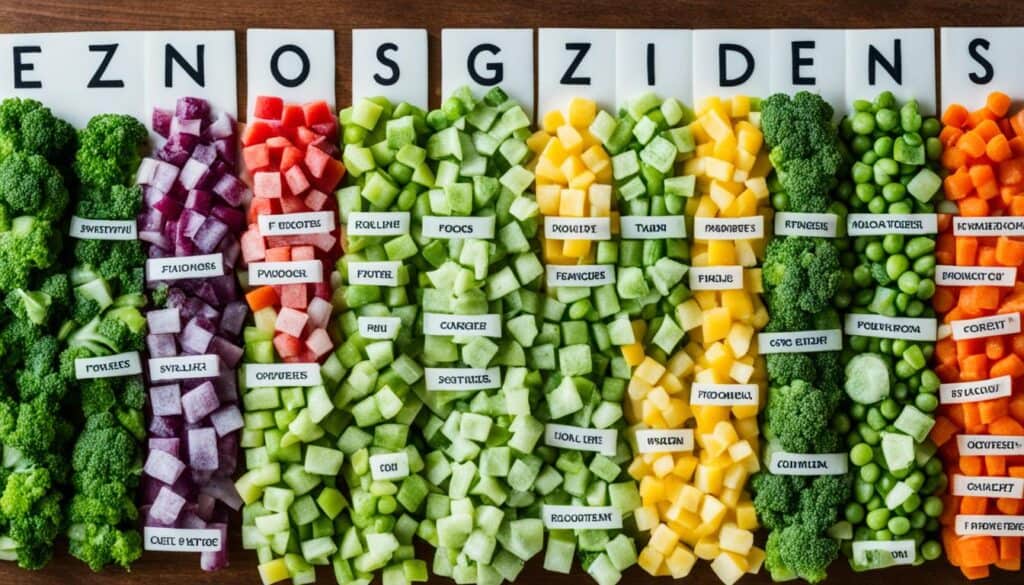
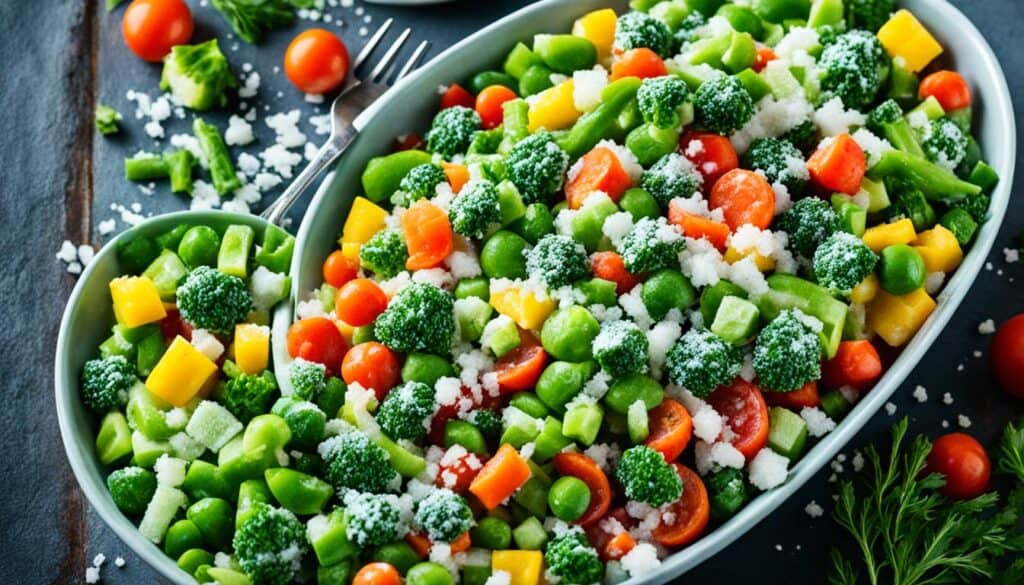
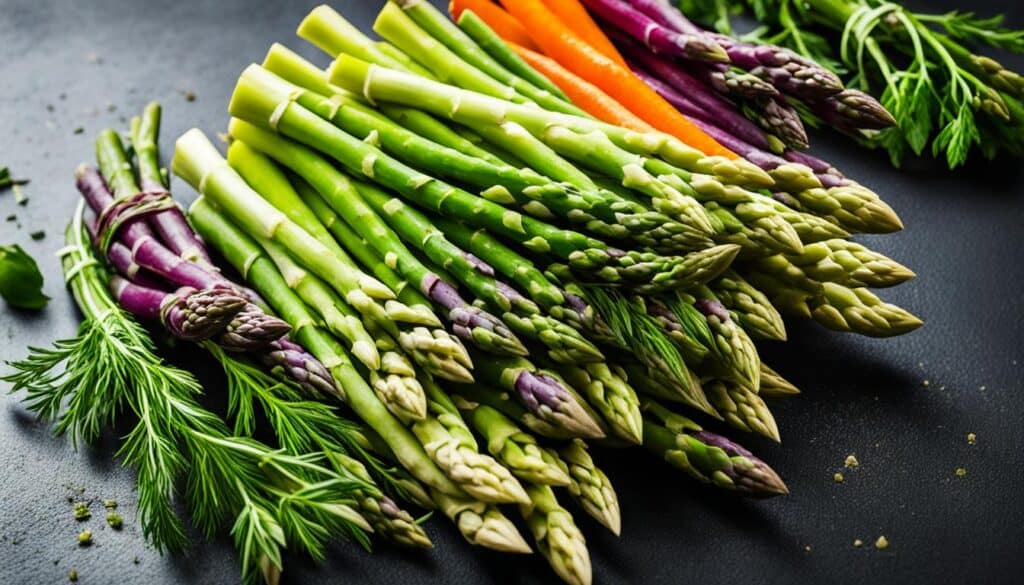
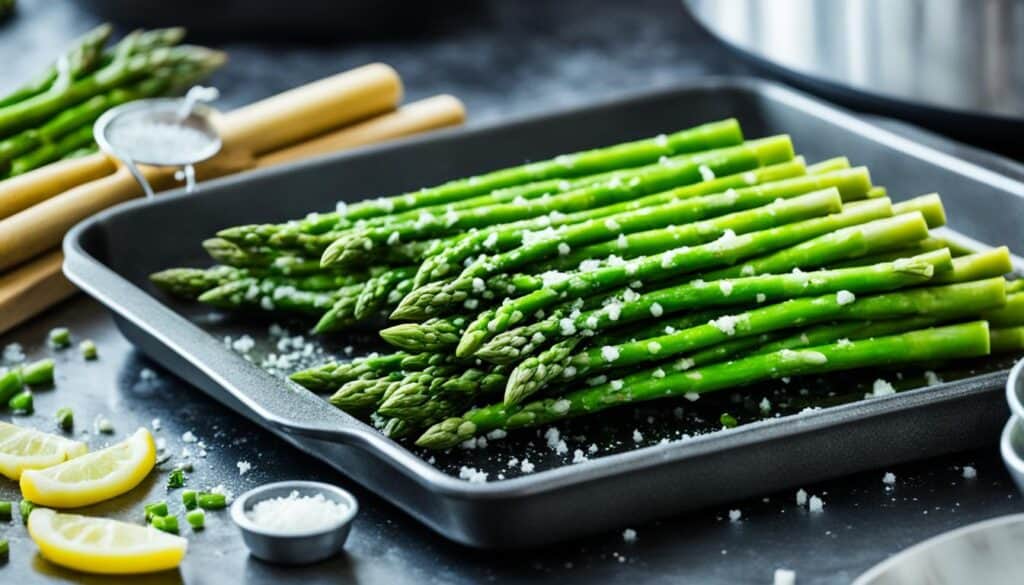
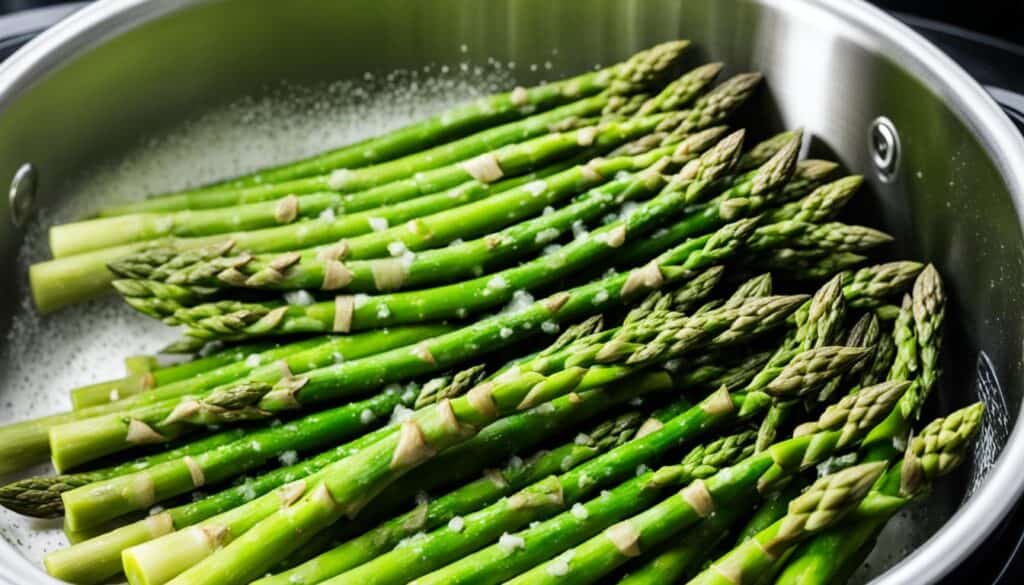

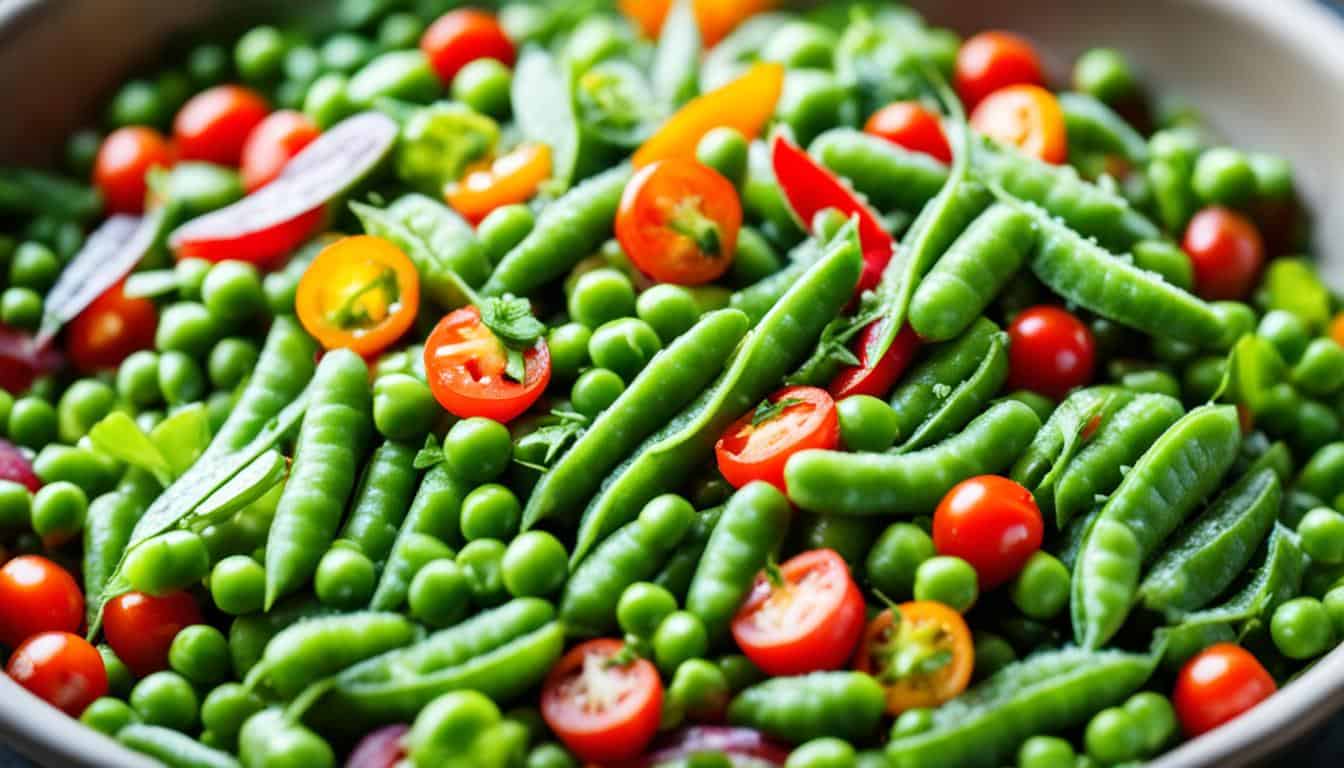
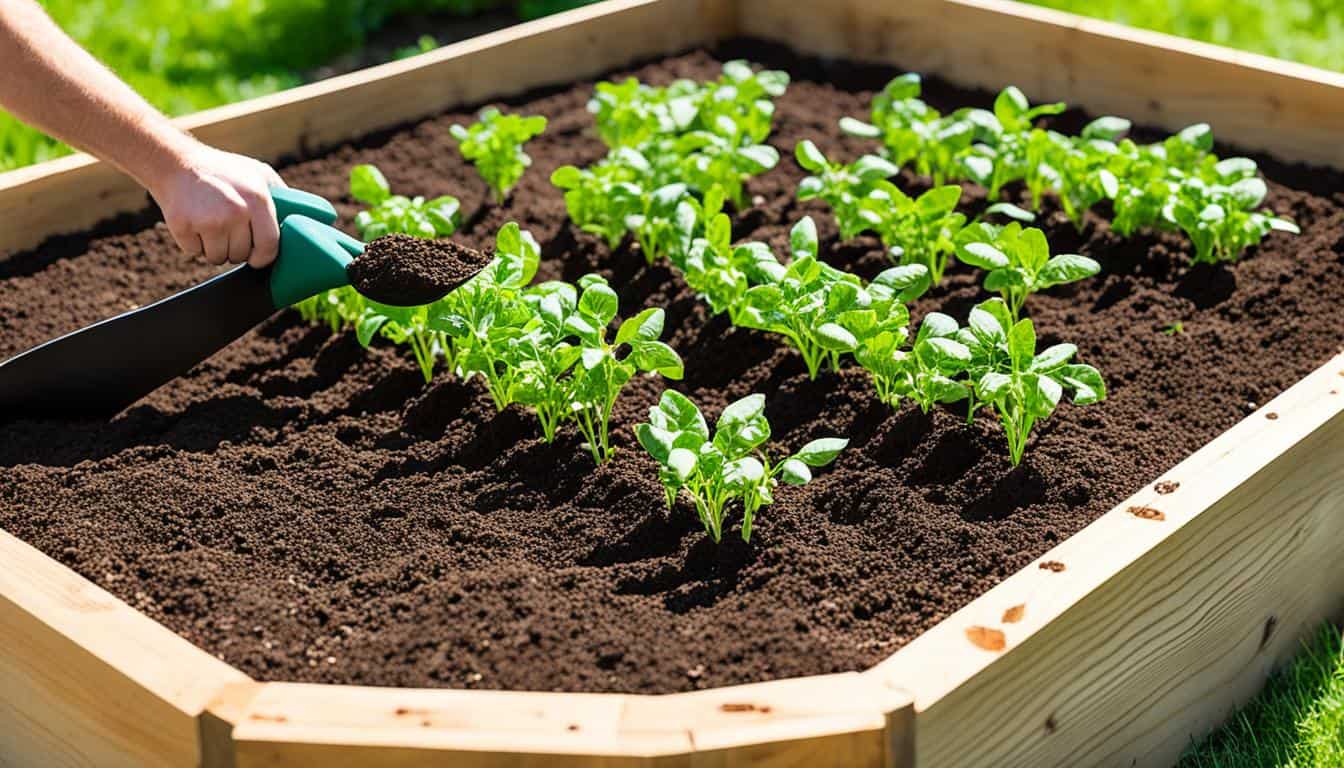
Leave a Reply